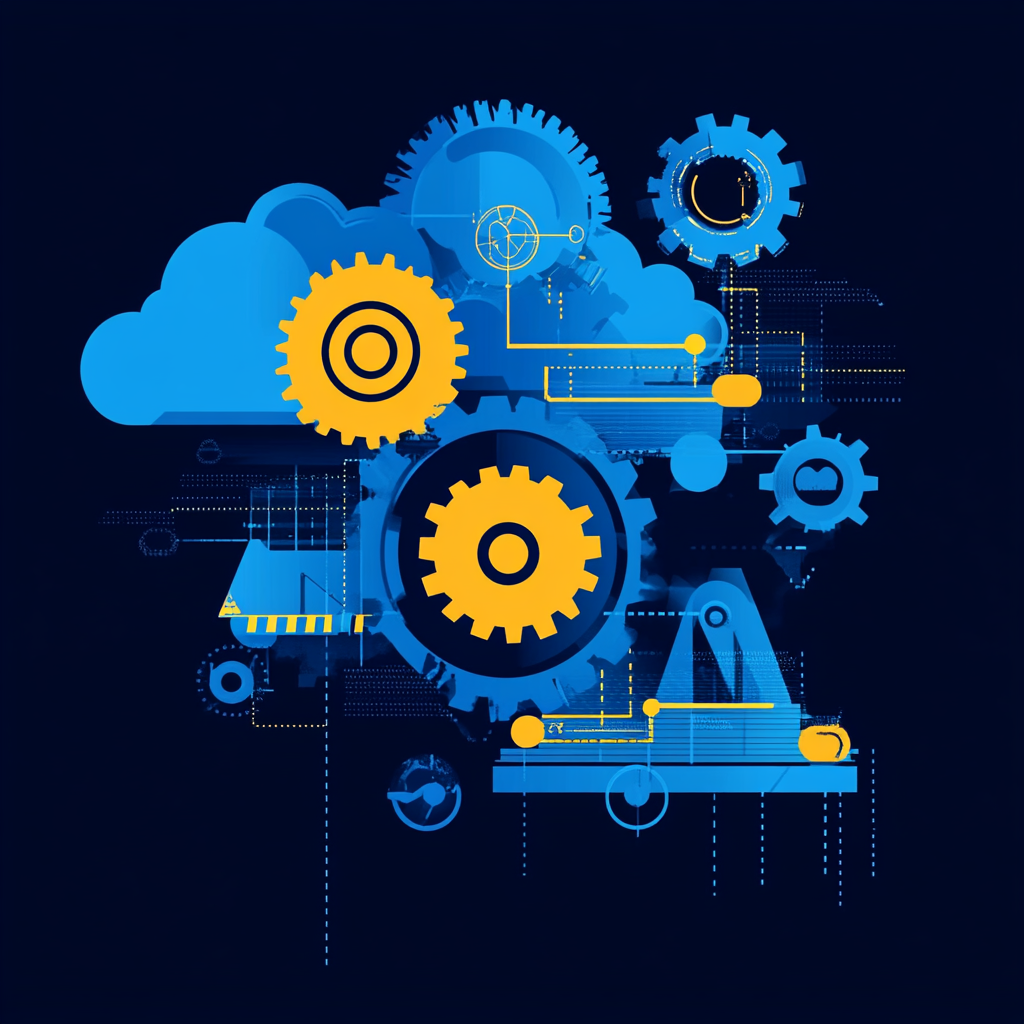Azure Machine Learning: Building and Deploying Models for the Future

Introduction:
In the rapidly evolving world of artificial intelligence (AI) and data science, machine learning (ML) is transforming industries and shaping the future. But building and deploying machine learning models can be a complex and time-consuming process. This is where Azure Machine Learning (Azure ML) comes into play, offering powerful tools and services to streamline every step of the ML lifecycle—from building and training models to deploying and managing them in production.
What is Azure Machine Learning?
Azure Machine Learning is a cloud-based service that provides a comprehensive suite of tools for data scientists, machine learning engineers, and developers. It helps automate and manage the process of building, training, testing, and deploying machine learning models. With integrated tools for experiment tracking, model monitoring, and performance optimization, Azure ML makes ML workflows more accessible, faster, and easier to manage.
1. Building Your Model with Azure Machine Learning
The first step in creating a machine learning model is selecting the appropriate algorithm and building the pipeline. Azure ML simplifies this process with a variety of tools and features, such as:
- Azure ML Designer: A drag-and-drop tool that allows users to design and deploy machine learning models without writing any code. Whether you’re a beginner or a seasoned expert, this visual interface makes it easy to experiment with data preprocessing, model training, and evaluation.
- Automated Machine Learning (AutoML): Azure ML’s AutoML capabilities enable you to automatically select the best algorithms, preprocess data, and tune hyperparameters for your specific problem, all without requiring deep expertise in machine learning.
- Custom Models: For more complex use cases, you can create custom models using popular frameworks like TensorFlow, PyTorch, and Scikit-learn. Azure ML supports the full development lifecycle, from data preparation to model training and validation.
2. Training Your Model with Azure Machine Learning
Once you’ve built your model, it’s time to train it on your data. Azure ML provides a highly scalable environment to train models efficiently, ensuring that even the most resource-intensive models can be trained with ease.
- Distributed Training: Azure ML supports distributed training on clusters, allowing you to scale your training workloads across multiple virtual machines. Whether you’re working with large datasets or computationally intensive models, Azure ensures that your training process is fast and efficient.
- Hyperparameter Tuning: Azure ML allows you to fine-tune your model’s hyperparameters with hyperparameter optimization, ensuring that your model performs at its best.
- ML Pipelines: You can automate and orchestrate the training process by defining ML pipelines, ensuring consistency and reproducibility in your experiments.
3. Deploying Your Model to Production
Building and training a model is only half the journey. Deploying your model to production is where the real value lies. Azure ML makes it easy to deploy machine learning models to the cloud, on-premises, or at the edge, with minimal hassle.
- Azure Kubernetes Service (AKS): You can deploy your model to AKS for scalable and high-performance production environments. Azure ML integrates seamlessly with AKS, enabling you to quickly scale your models as needed.
- Azure Container Instances (ACI): For more lightweight deployment, Azure ML offers ACI, which allows you to run your models in containers without managing any infrastructure.
- Edge Deployment: Azure also supports edge deployment, enabling you to deploy models on devices like IoT sensors and mobile applications, bringing machine learning capabilities closer to where they’re needed.
4. Monitoring and Managing Your Model
Once your model is deployed, monitoring and managing its performance is crucial to ensuring it delivers accurate and reliable predictions over time. Azure ML provides several tools to help you track and optimize your models in production.
- Model Drift Detection: Azure ML helps you monitor how well your model performs over time. If there’s a significant deviation from its original accuracy (known as “model drift”), the system alerts you to take corrective action.
- Model Retraining: With Azure ML, you can automate model retraining based on new data or performance issues, ensuring that your model remains relevant and accurate.
- Data and Model Versioning: Azure’s built-in versioning system makes it easy to keep track of different versions of your models, datasets, and experiments, ensuring that you can always go back and reproduce previous results.
5. Why Choose Azure Machine Learning?
Azure Machine Learning offers several compelling benefits that make it an ideal choice for ML development and deployment:
- End-to-End Workflow: From data preparation and training to deployment and monitoring, Azure ML covers every stage of the machine learning lifecycle.
- Scalability: Whether you’re working with small datasets or huge amounts of data, Azure ML’s cloud infrastructure can handle it.
- Flexibility: Whether you prefer a no-code, drag-and-drop interface or want to write custom code, Azure ML supports a wide range of development approaches.
- Security and Compliance: Azure ML ensures that your data and models are secure, with built-in compliance features to meet industry standards.
- Seamless Integration: Azure integrates with a variety of other services like Power BI, Microsoft Teams, and Azure Synapse Analytics, allowing you to create truly comprehensive AI solutions.
Conclusion
Azure Machine Learning is an incredibly powerful platform that can help data scientists and developers create, deploy, and manage machine learning models with ease. Whether you’re just starting or have extensive experience, Azure ML provides the tools and scalability to turn your machine learning ideas into reality.





